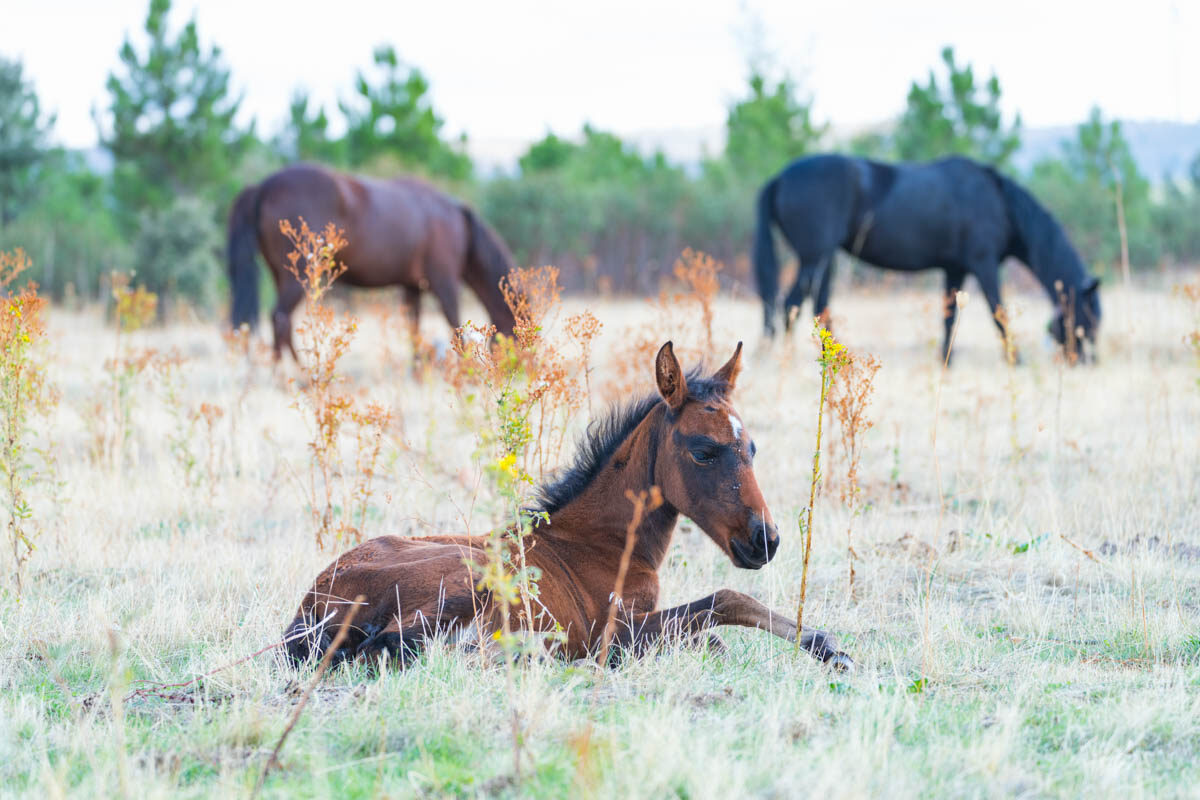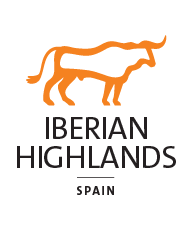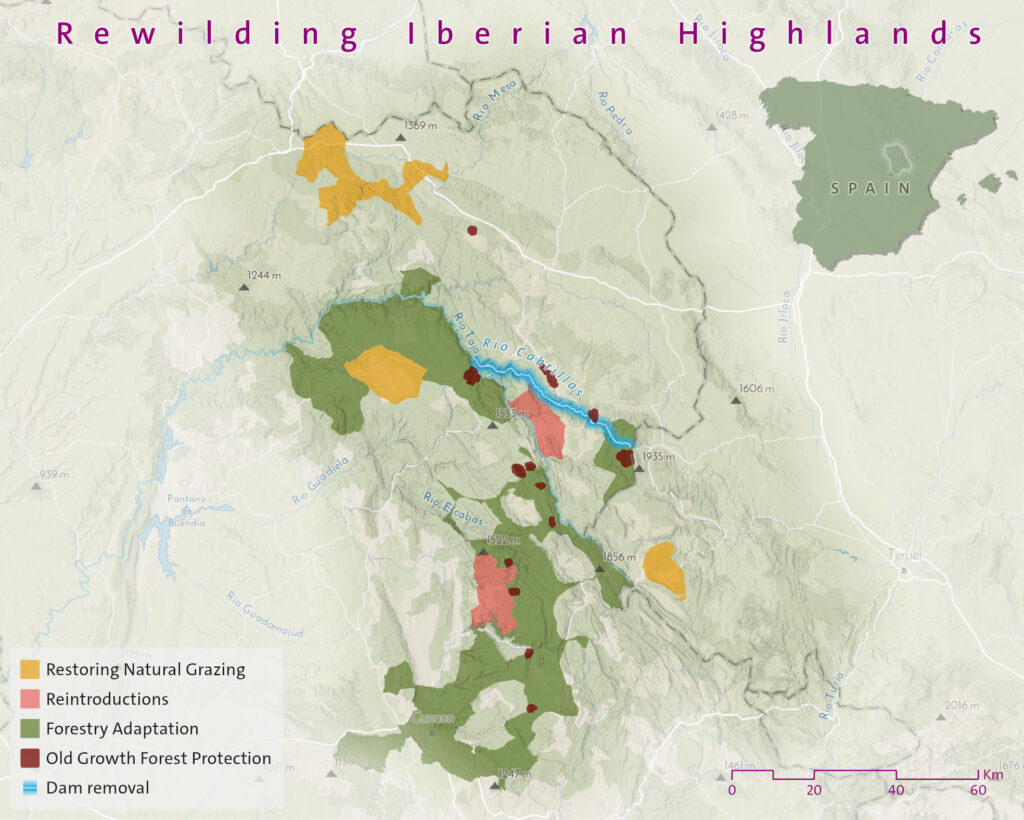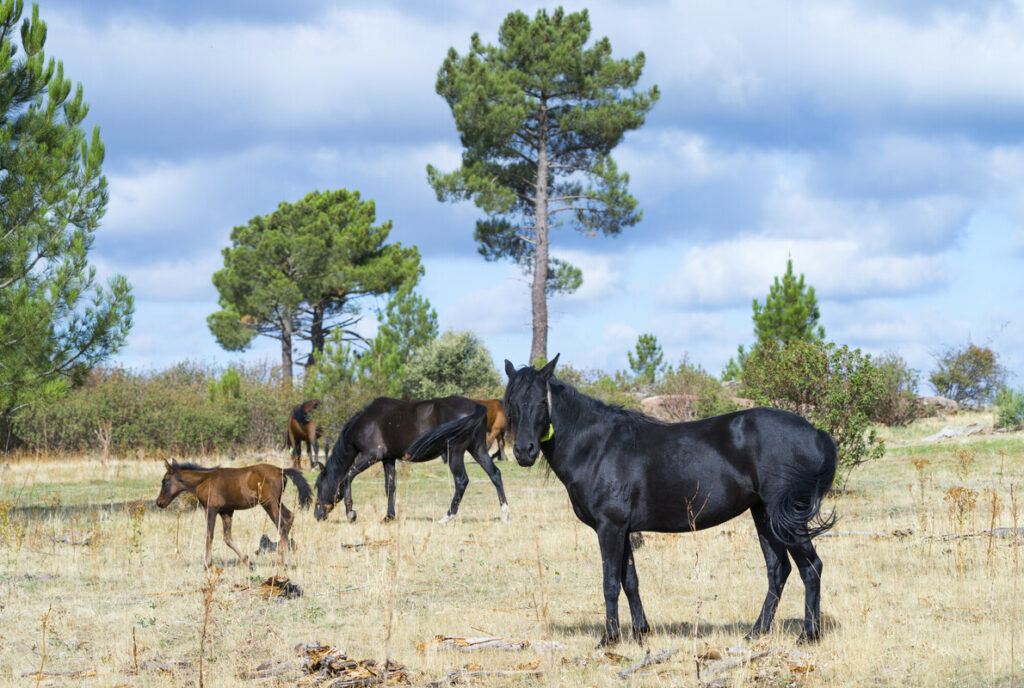In the Iberian Highlands rewilding landscape in Spain, the local rewilding team are working to reintroduce wild and semi-wild herbivores. By enhancing natural grazing, this is increasing biodiversity, reducing wildfire risk, and helping to regenerate natural forest.

Towards a wilder Iberian Highlands
 Located in central-eastern Spain, the Iberian Highlands became the tenth rewilding landscape in the Rewilding Europe portfolio in October 2022. The restoration of natural processes – such as natural grazing and scavenging – is an essential element of the overall rewilding vision for the landscape, enhancing the diversity, resilience and functionality of wild nature, and the benefits it provides to local communities.
Located in central-eastern Spain, the Iberian Highlands became the tenth rewilding landscape in the Rewilding Europe portfolio in October 2022. The restoration of natural processes – such as natural grazing and scavenging – is an essential element of the overall rewilding vision for the landscape, enhancing the diversity, resilience and functionality of wild nature, and the benefits it provides to local communities.
The efforts of the Iberian Highlands rewilding team to increase natural grazing were given a boost recently with the arrival of a new foal. This was born to a herd of semi-wild Serrano horses released last year by Rewilding Spain in the village of Mazarete, in the province of Guadalajara. The animals, which are relatively small and hardy and typically have black or brown coats, graze in the mountains without human interference, although they receive veterinary checks once a year and are tracked with GPS collars. The new arrival increases the herd size to 13.
“The birth of the foal shows that the Serranos are acclimatising well to their new home, which is great news for rewilding,” says Iberian Highlands team leader Pablo Schapira. “It has been wonderful to see semi-wild horses interacting with the landscape here once again.”

Wide-ranging benefits
Large wild herbivores such as European bison and wild horses play a key role in the restoration of healthy nature – their low-intensity grazing helps to improve biodiversity and regenerate forests by creating half-open, half-wooded landscapes. Their presence in ecosystems also benefits scavenging species such as vultures, and creates enabling conditions for the comeback of carnivores (such as Iberian lynx in the Iberian Highlands).
Wild and semi-wild herbivores can also help to reduce the risk of damaging wildfire by clearing scrub and bushes, which in many places in the Iberian Highlands have become overgrown as domesticated livestock have disappeared from the landscape.
As climate change plays out, catastrophic wildfire is increasingly impacting Spanish landscapes and biodiversity – as it is in Portugal and many other parts of the Mediterranean. In 2005, after a catastrophic wildfire damaged nearly 12,000 hectares of pine and Pyrenean oak in the Iberian Highlands, the burnt trees were removed and the area left to naturally regenerate. However, the groups of trees which have developed as a result are too dense and lacking in complexity, which prevents acorn production. Natural grazing by Serrano horses will open up these areas to light, leading to more structural diversity and supporting the long-term regeneration of the forest.

An endangered breed
Involving the Serrano horse (caballo serrano) in rewilding efforts will help to safeguard the animal’s continued existence. The breed, which has its origin in one of the three primitive horse ecotypes of the Iberian Peninsula, is believed to be closely related to the Losino horse, but genetic studies are still needed to clarify its relationship with the other peninsular breeds. This is certainly a very old breed that has inhabited the mountains and plateaus of the Iberian interior for centuries, as evidenced by different medieval documents and photographs taken at the beginning of the twentieth century.
Serrano horses have been traditionally used for jobs such as threshing, and transporting people and timber, and were allowed to roam municipal forests when not working. They were also highly valued for breeding mules (a cross between a donkey and a horse). The arrival of mechanisation and rural depopulation in the 1960s and 1970s meant the breed ceased to have a function, and many animals were sold or slaughtered. Fortunately, some horses were abandoned or escaped, managing to survive, breed and form wild herds in the mountains.
Despite this reprieve, the current status of the Serrano horse remains critical.
By 2011 it was considered extinct, but recent surveys have identified enough animals to make a recovery feasible. These can be found in three of the four provinces in which they used to live, but with populations fragmented and isolated, there is a high risk of both crossbreeding and inbreeding.

The bigger picture
Natural grazing (and other rewilding efforts) is being stepped up across the Iberian Highlands with support from the Endangered Landscapes Programme, Cartier for Nature and by the Arcadia Fund, the UK-based charitable trust of Lisbet Rausing and Peter Baldwin, with more horses scheduled for release by the local rewilding team in 2023. In addition, kulan (wild donkeys) will be released in arid areas of steppe. This will improve conditions for a host of bird species, including the Dupont’s lark, black-bellied sandgrouse, little bustard, and great bustard. A herd of Tauros were already released in the Albarracín Mountains (at the southwestern end of the Iberian Highlands) in April 2021.
